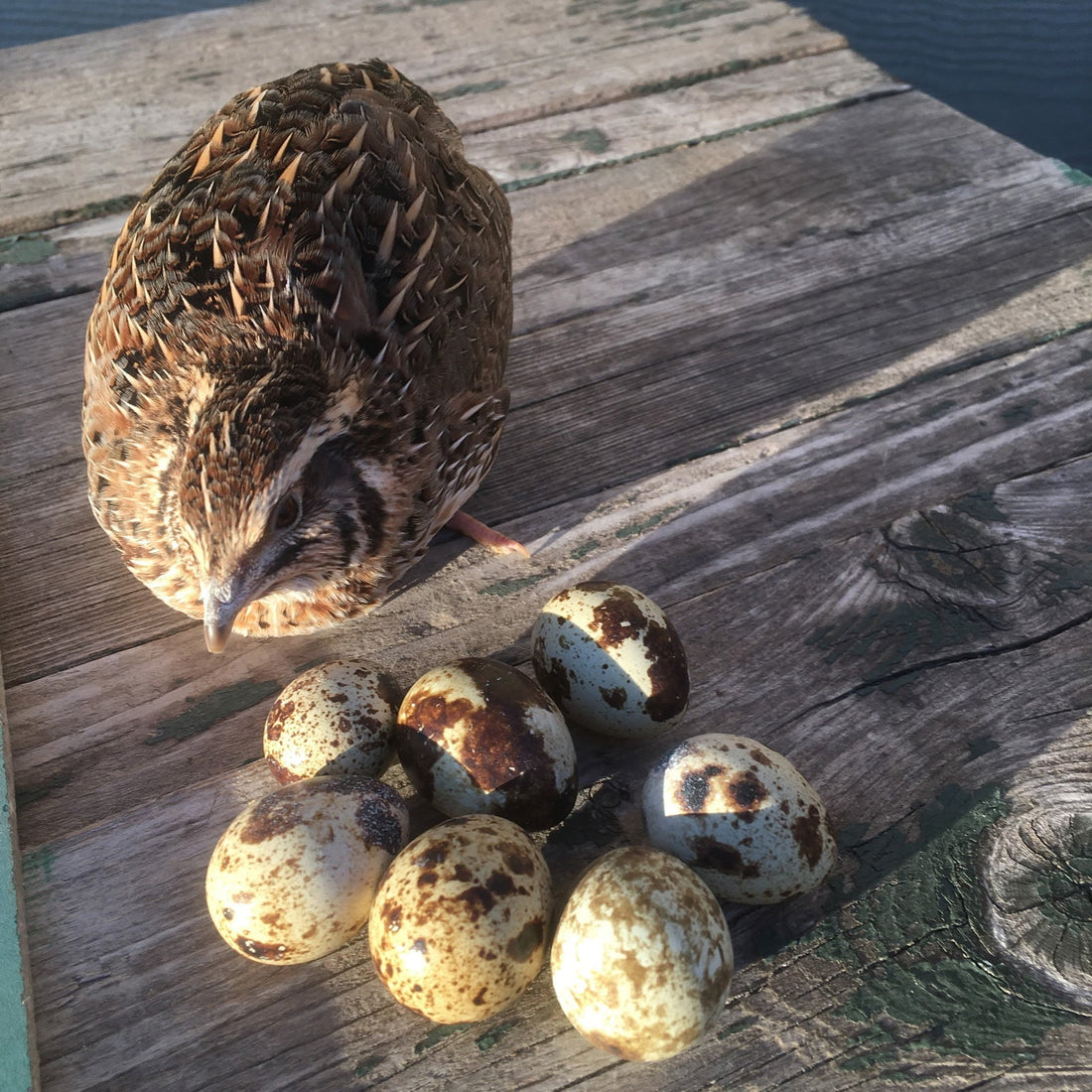
How to Boost Coturnix Quail Egg Production | Coturnix Cabin
Share
Raising Coturnix quail can be incredibly rewarding, especially when your hens are laying consistently. But even the best layers can slow down if their environment isn’t just right. Feed, temperature, and lighting are the three big factors that decide whether your birds stay productive.
Here’s how to give your quail the setup they need for strong egg production all year.
1. Food & Nutrition
The right feed is the foundation of egg production. Quail have higher nutritional needs than chickens, and even small deficiencies can slow laying.
Feed guidelines for laying Coturnix quail:
-
Protein: 18–20% for layers; start chicks on 24–28% before switching.
-
Calcium: 2.5–3% in the feed, plus crushed oyster shell or cuttlebone on the side.
-
Key amino acids: Methionine and lysine are the most critical for egg production. If these are lacking the birds aren't able to build the right types of protein to make eggs. Lysine should be .7 percent and methionine should be .3 percent. A little higher is fine but lower will lead to decreased laying.
Stick to a high-quality gamebird feed and keep treats minimal. Too many extras dilute nutrients and can reduce egg output.
2. Temperature & Comfort
Quail are most comfortable and productive in 60–75°F. When temperatures swing too far in either direction, their bodies prioritize survival over laying.
In hot weather:
-
Provide shade and good ventilation.
-
Reduce crowding so birds can cool themselves.
-
Place frozen water bottles in the pen to create cooler spots during extreme heat.
In cold weather:
-
Keep birds dry and out of drafts.
-
Use windbreaks and thick bedding for insulation.
-
Supplemental heat is rarely needed if they’re sheltered and dry.
Managing heat and cold stress is one of the quickest ways to get your hens back into production.
3. Lighting & Daylength
Lighting is the “on switch” for egg production. Short days in fall and winter naturally signal quail to slow down.
Lighting tips for consistent laying:
-
Give quail 14–16 hours of light per day.
-
Use an LED or fluorescent bulb bright enough to light the whole pen.
-
Put your light on a timer to keep the schedule consistent.
Avoid 24-hour lighting. Hens need 8–10 hours of darkness to rest and stay healthy.
